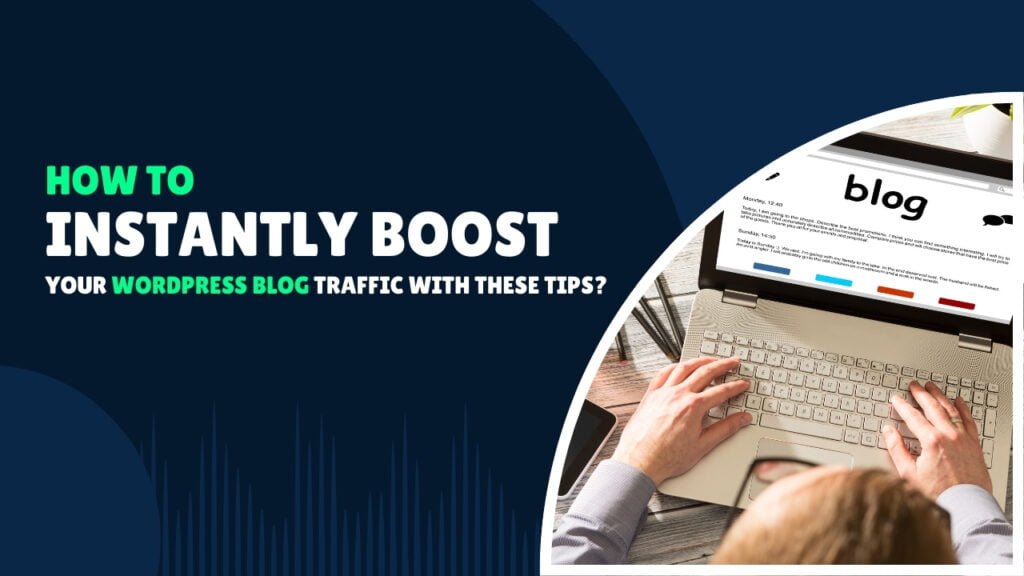Growing your WordPress blog audience through SEO requires a multifaceted approach. By optimizing your blog for search engines, you can attract more visitors, enhance user experience, and boost engagement. This comprehensive guide will cover various strategies and techniques to leverage SEO for audience growth.
Understanding SEO for WordPress Blogs
Search Engine Optimization (SEO) is critical for increasing visibility and driving traffic to your WordPress blog. SEO involves optimizing various elements of your website to ensure it ranks higher in search engine results pages (SERPs). For WordPress blogs, SEO is essential for reaching your target audience and growing your readership.
In essence, SEO for WordPress involves optimizing content, metadata, and site structure to align with search engine algorithms. This includes keyword optimization, creating high-quality content, and improving user experience. The more optimized your blog is, the higher it will rank in search results, leading to increased organic traffic.
Keyword Research and Implementation
Effective keyword research is the cornerstone of successful SEO. Identifying the right keywords involves understanding what your audience is searching for and integrating these keywords into your blog posts. Start by using tools like Google Keyword Planner, SEMrush, or Ahrefs to discover relevant keywords for your niche.
Steps for Keyword Research:
- Brainstorm Relevant Topics: Think about topics related to your blog’s focus.
- Use Keyword Research Tools: Find keywords with high search volume and low competition.
- Analyze Competitor Keywords: Review what keywords competitors are ranking for.
- Select Primary and Secondary Keywords: Choose main keywords and related terms to target.
Implementing Keywords:
- Titles: Include primary keywords in your post titles.
- Headings: Use keywords in subheadings to enhance relevancy.
- Content: Naturally integrate keywords throughout your content.
- Meta Descriptions: Write compelling meta descriptions with targeted keywords.
Must ReaD: Why Website Security Should Be Your Top Priority in 2024!
On-Page SEO Techniques
On-page SEO focuses on optimizing individual pages to rank higher and earn more relevant traffic. This involves improving content quality, optimizing meta tags, and enhancing user experience. Key on-page SEO techniques include:
1. Title Tags: Craft unique and descriptive title tags that include target keywords.
2. Meta Descriptions: Write engaging meta descriptions that summarize the content and include keywords.
3. Header Tags: Use H1, H2, H3, etc., to structure your content and incorporate keywords.
4. Image Optimization: Add descriptive alt text to images and use optimized file names.
5. URL Structure: Create clean and keyword-rich URLs for each post.
Tips for Effective On-Page SEO:
- Keep Titles Under 60 Characters: Ensure titles are concise and relevant.
- Use Structured Data: Implement schema markup to enhance search results.
- Optimize for Readability: Use short paragraphs, bullet points, and subheadings.
Optimizing Blog Post Titles and Meta Descriptions
The title and meta description are crucial for attracting clicks from search results. An optimized title grabs attention and includes primary keywords, while the meta description provides a brief summary of the post and encourages users to click through.
Crafting Effective Titles:
- Include Keywords: Ensure the primary keyword is part of the title.
- Be Descriptive: Clearly describe the content of the post.
- Create Curiosity: Use engaging language to entice readers.
Writing Compelling Meta Descriptions:
- Summarize the Post: Provide a concise overview of the content.
- Include Keywords: Integrate primary and secondary keywords.
- Encourage Action: Use a call-to-action to prompt clicks.
Creating High-Quality Content
High-quality content is essential for SEO and audience growth. It should be informative, engaging, and valuable to your readers. Focus on creating content that answers questions, solves problems, and provides insights.
Key Aspects of High-Quality Content:
- Relevance: Ensure content aligns with the interests of your target audience.
- Originality: Avoid duplicating content from other sources.
- Engagement: Use engaging visuals, infographics, and interactive elements.
- Length: Aim for comprehensive posts that cover topics in-depth.
Content Creation Tips:
- Research Thoroughly: Use credible sources and data to support your content.
- Update Regularly: Keep content fresh and relevant by updating old posts.
- Encourage Interaction: Include calls-to-action and invite readers to leave comments.
Internal Linking Strategies
Internal linking enhances navigation and helps distribute page authority across your site. Effective internal linking improves SEO by guiding users to related content and helping search engines understand the structure of your blog.
Best Practices for Internal Linking:
- Use Descriptive Anchor Text: Incorporate relevant keywords in anchor text.
- Link to Relevant Content: Ensure links lead to related and valuable content.
- Maintain a Logical Structure: Organize links to support a clear site hierarchy.
Internal Linking Tips:
- Link to High-Priority Pages: Focus on linking to important pages and posts.
- Use Contextual Links: Place links naturally within the content.
- Monitor Broken Links: Regularly check for and fix broken internal links.
Improving Page Load Speed
Page load speed is a critical factor for user experience and SEO. Slow-loading pages can lead to higher bounce rates and lower search rankings. To improve load speed, consider the following techniques:
Strategies for Enhancing Page Load Speed:
- Optimize Images: Compress and resize images to reduce file sizes.
- Use Caching: Implement browser caching and server-side caching.
- Minimize HTTP Requests: Reduce the number of elements on each page.
- Enable Compression: Use Gzip or Brotli to compress files.
Tools for Measuring Page Speed:
- Google PageSpeed Insights: Analyze page speed and get improvement recommendations.
- GTmetrix: Evaluate performance and identify optimization opportunities.
- Pingdom: Test load times from different locations.
Must Read: 10 Blogging Tips That Will Skyrocket Your Traffic Overnight!
Mobile Optimization
With the rise of mobile internet usage, optimizing your WordPress blog for mobile devices is essential. A mobile-friendly site improves user experience and boosts your search engine rankings.
Mobile Optimization Tips:
- Responsive Design: Ensure your blog adapts to various screen sizes.
- Touch-Friendly Elements: Make buttons and links easy to tap.
- Mobile-Friendly Navigation: Simplify menus and navigation for mobile users.
- Optimize Images for Mobile: Use responsive images that load quickly.
Testing Mobile Optimization:
- Google Mobile-Friendly Test: Check if your site is mobile-friendly.
- Browser Developer Tools: Simulate mobile views to test responsiveness.
- User Testing: Gather feedback from mobile users.
Utilizing SEO Plugins for WordPress
SEO plugins can streamline optimization tasks and enhance your blog’s performance. Popular WordPress SEO plugins offer features such as meta tag management, keyword optimization, and performance analysis.
Top SEO Plugins:
- Yoast SEO: Provides on-page optimization recommendations and readability analysis.
- All in One SEO Pack: Offers comprehensive SEO features and user-friendly interface.
- Rank Math: Includes advanced SEO tools and integration with Google Search Console.
Features to Look For in SEO Plugins:
- On-Page SEO Analysis: Helps optimize individual posts and pages.
- XML Sitemaps: Generates sitemaps to improve indexing.
- Social Media Integration: Supports social media optimization.
Building Quality Backlinks
Backlinks from reputable sites enhance your blog’s authority and improve search rankings. Building quality backlinks involves acquiring links from credible sources within your niche.
Strategies for Acquiring Backlinks:
- Guest Blogging: Write guest posts for relevant blogs and include backlinks.
- Outreach: Contact influencers and industry leaders for link opportunities.
- Content Promotion: Share content on social media and industry forums.
Monitoring and Managing Backlinks:
- Use Tools: Employ tools like Ahrefs or SEMrush to track backlinks.
- Disavow Toxic Links: Remove or disavow harmful backlinks that could impact rankings.
- Build Relationships: Network with other bloggers and industry experts.
Using Social Media to Enhance SEO
Social media platforms can drive traffic to your WordPress blog and boost SEO. By sharing content on social media, you can increase visibility, attract new readers, and encourage engagement.
Social Media Strategies:
- Share Content Regularly: Post updates and links to new blog content.
- Engage with Followers: Respond to comments and participate in discussions.
- Use Hashtags: Include relevant hashtags to increase reach and visibility.
- Analyze Performance: Track social media metrics to assess effectiveness.
Tools for Social Media Management:
- Hootsuite: Schedule posts and monitor social media activity.
- Buffer: Manage multiple accounts and analyze engagement.
- Sprout Social: Track social performance and interact with followers.
Analyzing SEO Performance with Tools
Regular analysis of your SEO performance helps you understand what’s working and identify areas for improvement. Use various tools to track rankings, traffic, and other key metrics.
Key SEO Analytics Tools:
- Google Analytics: Monitor traffic sources, user behavior, and conversion rates.
- Google Search Console: Track search performance, indexing status, and crawl errors.
- SEMrush: Analyze keyword rankings, backlinks, and site health.
Metrics to Monitor:
- Organic Traffic: Measure traffic coming from search engines.
- Bounce Rate: Analyze the percentage of visitors who leave after viewing one page.
- Conversion Rate: Track the effectiveness of your SEO efforts in achieving goals.
The Importance of User Experience (UX)
User experience (UX) significantly impacts SEO and audience retention. A positive UX leads to longer visits, lower bounce rates, and higher engagement.
Factors Affecting UX:
- Navigation: Ensure intuitive and easy-to-use navigation.
- Design: Use a clean and visually appealing design.
- Content Layout: Present content in a readable and engaging format.
Improving UX:
- Conduct User Research: Gather feedback to understand user needs.
- Test Usability: Perform usability tests to identify issues.
- Optimize Interaction: Enhance interactive elements for better user engagement.
Updating and Refreshing Old Content
Refreshing old content keeps it relevant and can improve its performance in search results. Regularly update outdated posts with new information and insights.
Steps for Updating Content:
- Review Performance: Analyze the performance of old posts.
- Update Information: Add new data, insights, and examples.
- Optimize SEO: Reassess keywords, titles, and meta descriptions.
Benefits of Content Updates:
- Improved Rankings: Updated content may rank higher in search results.
- Increased Engagement: Fresh content attracts more readers.
- Enhanced Credibility: Demonstrates up-to-date knowledge and expertise.
Leveraging Long-Tail Keywords
Long-tail keywords are specific phrases that target niche audiences. They typically have lower competition and higher conversion potential.
Benefits of Long-Tail Keywords:
- Higher Relevance: Attracts users with specific search intent.
- Lower Competition: Easier to rank for niche phrases.
- Better Conversion Rates: Users searching for specific terms are more likely to convert.
Finding Long-Tail Keywords:
- Use Keyword Tools: Find long-tail variations with tools like Ubersuggest or Answer the Public.
- Analyze Search Queries: Review search queries in Google Search Console.
- Check Competitors: Identify long-tail keywords used by competitors.
Implementing Structured Data
Structured data helps search engines understand your content and enhance search results with rich snippets. Implementing schema markup can improve visibility and click-through rates.
Types of Structured Data:
- Article Schema: Provides information about blog posts.
- Product Schema: Displays product details in search results.
- Review Schema: Shows reviews and ratings.
Tools for Implementing Structured Data:
- Google’s Structured Data Markup Helper: Create and test schema markup.
- Schema.org: Find schema types and properties.
- Rich Results Test: Verify that structured data is implemented correctly.
Enhancing Local SEO
For blogs targeting a local audience, local SEO is crucial. It helps improve visibility in local search results and attract local readers.
Local SEO Strategies:
- Optimize Google My Business: Create and manage your Google My Business profile.
- Include Local Keywords: Use location-specific keywords in your content.
- Get Local Backlinks: Acquire links from local websites and directories.
Local SEO Tools:
- Google My Business Insights: Analyze performance and manage listings.
- Moz Local: Manage local listings and monitor local SEO performance.
- BrightLocal: Track local search rankings and review performance.
Avoiding Common SEO Mistakes
Avoiding common SEO mistakes can prevent setbacks and ensure effective optimization. Be aware of potential pitfalls and address them promptly.
Common SEO Mistakes:
- Keyword Stuffing: Overloading content with keywords.
- Ignoring Mobile Optimization: Neglecting mobile-friendly design.
- Duplicate Content: Publishing similar or identical content on multiple pages.
- Neglecting User Experience: Focusing solely on SEO without considering user needs.
Preventing SEO Mistakes:
- Conduct Regular Audits: Review your site for issues and make improvements.
- Stay Informed: Keep up with SEO best practices and algorithm updates.
- Test and Optimize: Continuously test strategies and optimize based on results.
Engaging with Your Audience Through Comments
Engaging with readers through blog comments fosters a sense of community and encourages repeat visits. Respond to comments to build relationships and enhance user experience.
Best Practices for Managing Comments:
- Respond Promptly: Engage with readers in a timely manner.
- Encourage Discussion: Ask questions and invite feedback.
- Moderate Comments: Filter out spam and inappropriate content.
Tools for Comment Management:
- Disqus: Manage comments and engage with readers.
- Akismet: Filter out spam comments and improve moderation.
- CommentLuv: Encourage interaction with comment rewards.
Staying Updated with SEO Trends
SEO is a constantly evolving field. Staying updated with the latest trends and algorithm changes helps maintain effective strategies and improve performance.
Ways to Stay Informed:
- Follow Industry Blogs: Read updates from SEO experts and industry leaders.
- Attend Webinars and Conferences: Participate in events and workshops.
- Join SEO Communities: Engage with online forums and social media groups.
Resources for SEO News:
- Moz Blog: Get insights and updates on SEO strategies.
- Search Engine Journal: Stay informed about industry news and trends.
- Google Webmasters Blog: Learn about algorithm updates and best practices.
Must Read: 10 WP Plugins You Can’t Live Without – Ultimate Review!
FAQs
How can I effectively conduct keyword research for my WordPress blog?
Use tools like Google Keyword Planner, SEMrush, or Ahrefs to find relevant keywords. Consider search volume, competition, and relevance to your niche. Analyze competitor keywords and select both primary and secondary keywords for your content.
What are the best practices for optimizing blog post titles and meta descriptions?
Craft titles that include primary keywords and are descriptive yet concise. Write meta descriptions that summarize the content, include keywords, and encourage clicks with a compelling call-to-action.
How can I improve my blog’s page loading speed?
Optimize images, use caching, minimize HTTP requests, and enable file compression. Tools like Google PageSpeed Insights and GTmetrix can help you identify areas for improvement.
Why is mobile optimization important for SEO?
Mobile optimization ensures that your blog is accessible and user-friendly on mobile devices. With increasing mobile internet usage, a mobile-friendly site enhances user experience and can improve search rankings.
How can I build quality backlinks for my WordPress blog?
Acquire backlinks through guest blogging, outreach to industry influencers, and promoting content. Use tools like Ahrefs or SEMrush to track and manage your backlink profile.



